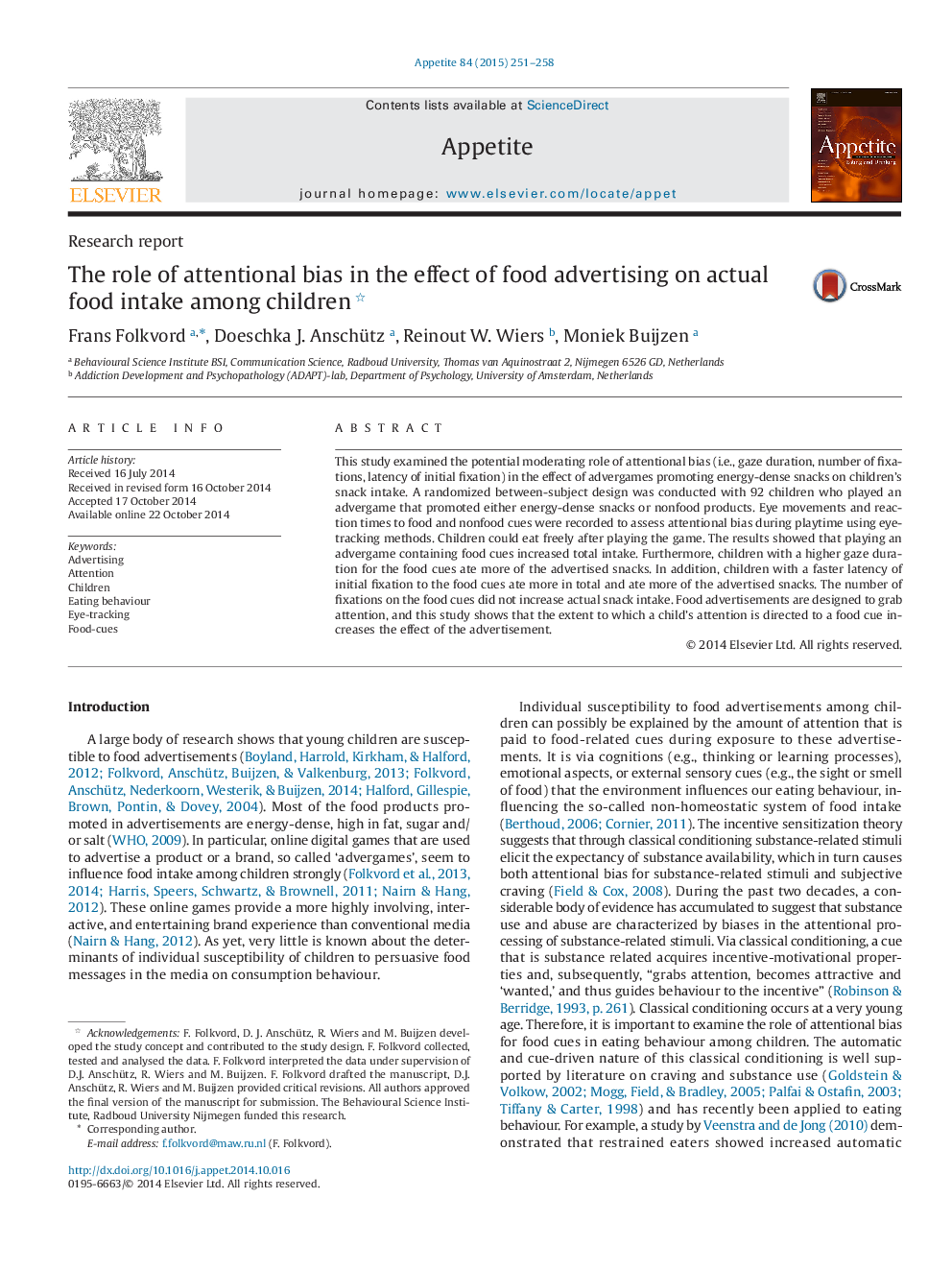| Article ID | Journal | Published Year | Pages | File Type |
|---|---|---|---|---|
| 7309772 | Appetite | 2015 | 8 Pages |
Abstract
This study examined the potential moderating role of attentional bias (i.e., gaze duration, number of fixations, latency of initial fixation) in the effect of advergames promoting energy-dense snacks on children's snack intake. A randomized between-subject design was conducted with 92 children who played an advergame that promoted either energy-dense snacks or nonfood products. Eye movements and reaction times to food and nonfood cues were recorded to assess attentional bias during playtime using eye-tracking methods. Children could eat freely after playing the game. The results showed that playing an advergame containing food cues increased total intake. Furthermore, children with a higher gaze duration for the food cues ate more of the advertised snacks. In addition, children with a faster latency of initial fixation to the food cues ate more in total and ate more of the advertised snacks. The number of fixations on the food cues did not increase actual snack intake. Food advertisements are designed to grab attention, and this study shows that the extent to which a child's attention is directed to a food cue increases the effect of the advertisement.
Related Topics
Life Sciences
Agricultural and Biological Sciences
Food Science
Authors
Frans Folkvord, Doeschka J. Anschütz, Reinout W. Wiers, Moniek Buijzen,
